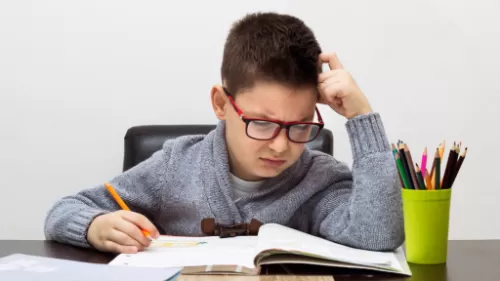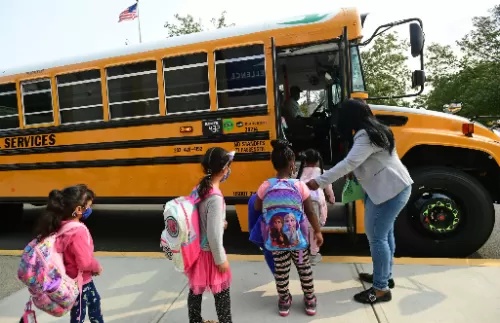
5 Ways Schools Can Ease Student Anxiety

Early Educators Face Growing Strain as Preschool Expansion Stalls

History Class Can Foster Literacy Skills: A Hidden Power in the Curriculum

Understanding Dyslexia in Special Education: A Guide for Parents and Educators

Unpacking the Core of American Education: What Defines a High-Quality Curriculum

Transforming Classrooms: How Educational IT Is Reshaping Learning in America

Education Department Adds $60 Million in Grants for Charter Schools

The Future Is Virtual: How Online Teaching Is Redefining American Education

How Schools Help Graduates Find Jobs: The Hidden Value of Career Services

Digital Literacy Lessons for Elementary Students: Teaching Tomorrow’s Skills Today
What Makes Schools Safe: A Holistic Look at Security, Belonging, and Preparedness
In today’s complex world, the question of what makes schools safe has never been more urgent—or more layered. School safety isn’t just about locked doors and surveillance cameras. It’s about creating an environment where students feel physically protected, emotionally supported, and socially connected. From school shootings to bullying to mental health crises, the threats students face are varied—and so must be our responses. To ensure lasting safety, schools must adopt a comprehensive approach that includes physical security, mental health resources, community relationships, and smart policy decisions.
Related searches

Physical Security: Beyond Metal Detectors and Cameras
While visible security measures like locked entryways, ID badges, and surveillance systems remain essential, experts stress that physical security must be thoughtfully integrated—not fear-inducing. Schools are increasingly designing entrances with secure vestibules, hiring trained security staff, and conducting regular emergency drills. However, true safety doesn’t come from creating a prison-like environment. The goal is to deter external threats while preserving a sense of openness and trust. Regular safety audits and partnerships with local law enforcement can help tailor security measures to the unique needs of each school community.
Emotional Safety: Mental Health as a Safety Strategy
An often-overlooked component of school safety is emotional well-being. When students feel anxious, isolated, or unsupported, it can manifest in harmful behaviors—or leave them vulnerable to harm. Increasingly, schools are recognizing that mental health professionals, such as school psychologists and counselors, are frontline defenders of safety. Programs that build emotional literacy, resilience, and conflict resolution skills are also gaining ground. When students are taught how to manage stress, ask for help, and relate to others with empathy, schools become safer not just in structure—but in spirit.
Relationship Building: A Culture of Trust and Inclusion
Creating a safe school is just as much about relationships as it is about rules. When students feel known and respected by teachers and peers, they are more likely to report concerns, follow school policies, and support one another. Schools that cultivate a strong sense of belonging—through clubs, mentorships, inclusive curricula, and anti-bullying campaigns—are shown to have lower rates of violence and absenteeism. Teachers, administrators, and staff play a crucial role in modeling respect and building a positive, inclusive environment where every student feels they matter.
Emergency Preparedness: Drills, Plans, and Community Coordination
Being prepared for the worst doesn’t mean living in fear—it means being ready. Schools across the U.S. are now required to conduct regular lockdown drills, fire drills, and evacuation rehearsals. While these exercises can be unsettling, especially for younger children, when handled with care and transparency, they empower students and staff to respond calmly in emergencies. It’s also vital that these plans are developed with input from law enforcement, fire departments, and parents. Communication systems, such as text alerts and school-wide intercoms, further ensure that responses are quick and coordinated.
Smart Policies and Clear Communication
School safety policies must be clear, consistent, and student-centered. This includes everything from clear codes of conduct to anonymous reporting systems for threats or harassment. Policies that are overly punitive or vague can backfire, causing students to feel criminalized rather than protected. Many schools are moving away from “zero-tolerance” models and toward restorative justice, which focuses on accountability and reconciliation. Transparent communication with families about safety practices—whether it’s new protocols, incident reports, or community partnerships—builds trust and shared responsibility between schools and the communities they serve.
Involving the Whole Community
School safety is not solely a school issue—it’s a community responsibility. Parents, local businesses, first responders, mental health organizations, and policymakers all have a role to play. Community partnerships can provide funding for counselors, volunteer support, and neighborhood watch-style initiatives. Events like parent safety nights, student safety councils, and public forums invite meaningful dialogue and deepen collaboration. When the broader community is engaged, schools don’t have to shoulder the burden of safety alone—and students reap the benefits of a more connected support network.
Conclusion
When we ask “What makes schools safe?”, we must think beyond fences and cameras. A truly safe school is one where students are seen, supported, and prepared. It’s a place where adults are trusted allies, where differences are respected, and where potential threats—whether physical or emotional—are met with proactive, compassionate responses. Safety is not just about reacting to danger; it’s about creating conditions where danger is less likely to arise. By approaching school safety with empathy, strategy, and community spirit, we can build learning environments where all students thrive.
 By: Liam Li
By: Liam Li
